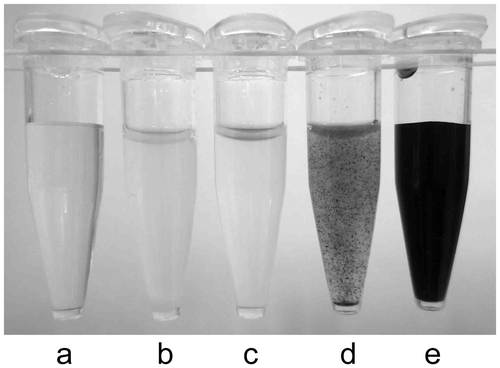Figures & data
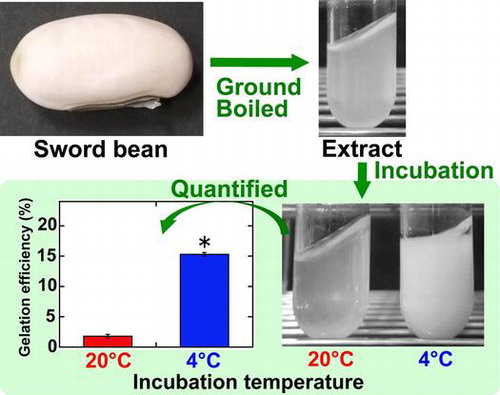
Figure 1. Gelation of sword bean extract. (A) Soaked sword beans were ground in distilled water. The suspension containing ground beans was then boiled and sieved through a cotton cloth (a). The extract was incubated at 20 °C (b) or 4 °C (c) for 1 day. The photographs of the extracts were taken while inclining the test tubes at 45°. (B) After incubation, the gelation efficiency (the weight of the wet precipitate as a percentage of that of the initial sample) was calculated. Data are expressed as the means ± standard deviations of three independent experiments. The statistical significance of differences was determined by the t-test. *p < 0.001.
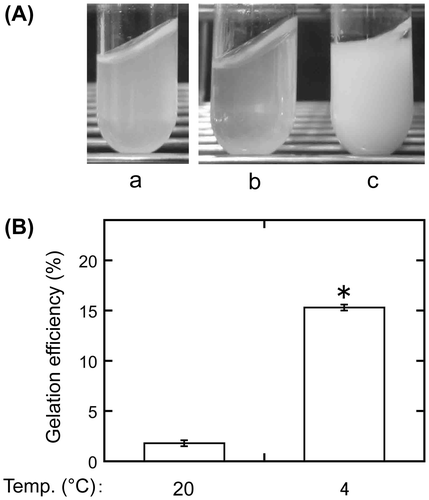
Figure 2. Effects of heating treatment during extract preparation on gelation. Sword bean extracts were prepared by incubating the suspension containing ground beans at 100 or 105 °C for 3 min or boiling it with stirring for 3 min. The heated suspension was sieved through a cotton cloth, and the extracts were incubated at 20 or 4 °C for 1 day. Gelation efficiency was calculated as in Figure . Data are expressed as the means ± standard deviations of three independent experiments. The statistical significance of differences was determined by one-way analysis of variance and the Tukey–Kramer test. Different letters indicate a significant difference (p < 0.001).
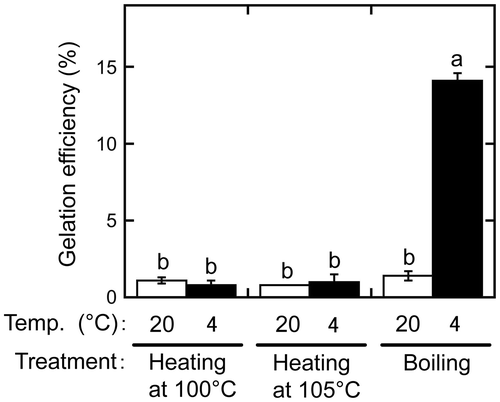
Figure 3. Difference between extracts produced by removing ground beans before and after boiling. One extract was produced by boiling a suspension containing ground beans, which were then removed by sieving (+). Another was prepared by removing the ground beans from the suspension before boiling, after which, it was sieved again (−). The extracts were then incubated at 20 °C (white bars) or 4 °C (black bars) for 1 day. Gelation efficiency was calculated as in Figure . Data are expressed as the means ± standard deviations of three independent experiments. Statistically significant differences were determined by one-way analysis of variance and the Tukey–Kramer test. Different letters indicate a significant difference (p < 0.001).
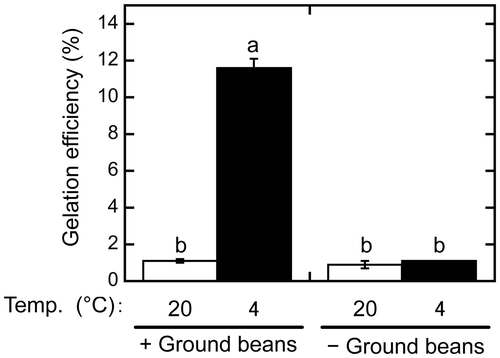
Figure 4. Analysis of sword bean proteins in extracts prepared using different procedures. The effects of each extraction protocol on sword bean proteins were analyzed by SDS-PAGE. During extraction, suspensions containing ground beans (+) (lanes 1, 3, and 4) or not (−) (lanes 2, 5, and 6) were boiled (+) (lanes 3–6) or not (−) (lanes 1 and 2). The boiled suspensions were then sieved to obtain extracts, whereas the unboiled suspensions were not, instead being used directly as extracts. In addition, the extracts were centrifuged (+) (lanes 4 and 6) or not (−) (lanes 1–3, and 5).
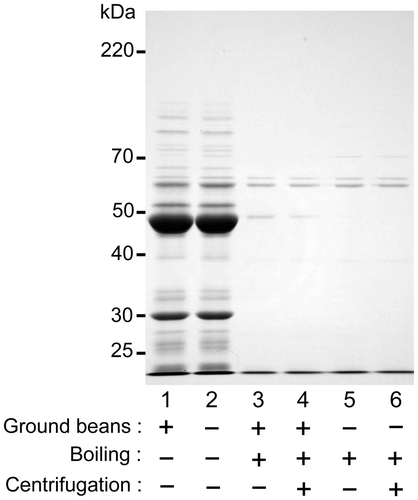
Figure 5. Effect of incubation time on gelation. An extract was prepared by boiling and subsequently sieving a suspension containing ground beans. The extract was then incubated at 4 °C (open circles) or 20 °C (closed circles) for between 0 and 14 days. Gelation efficiency was calculated as in Figure . Data are expressed as the means ± standard deviations of three independent experiments.

Figure 6. Effect of temperature on gelation. Extracts were prepared by boiling and then sieving suspensions containing ground beans. Each was then incubated at a temperature between 4 and 20 °C for 2 days. Gelation efficiency was calculated as in Figure . Data are expressed as the means ± standard deviations of three independent experiments.
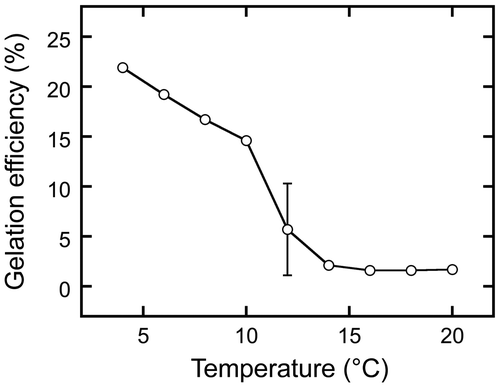
Figure 7. Establishment of gel melting temperature. Gels were prepared from sword bean extracts by incubation at 4 °C for 2 days. Each was then incubated at a temperature between 20 and 100 °C for 5 min. Gelation efficiency was calculated as in Figure . Data are expressed as the means ± standard deviations of three independent experiments.
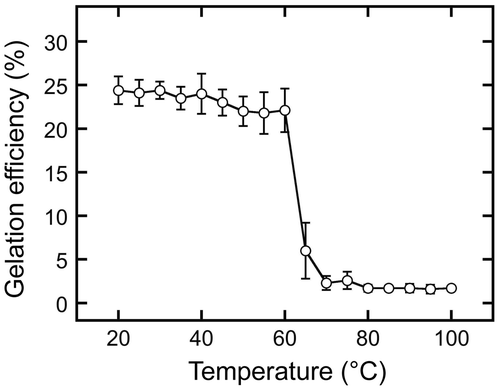
Figure 8. Iodo-starch reactions to sword bean extracts prepared using different procedures. Soaked sword beans were ground and separated into supernatant (b) and precipitate by centrifugation. The supernatant was then boiled (c). Separately, an extract was prepared by boiling suspensions containing ground sword beans and sieving them through a cotton cloth (d). Each extract, distilled water (a), and 1% starch (e) were then mixed with iodine-potassium iodide solution.
